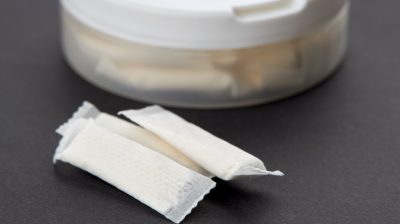What is skin cancer?
Learn more about skin cancer, a disease of the skin cells that is the most common form of cancer in diagnosed Ireland.

Skin cancer is a disease of skin cells. Nine out of every 10 cases are caused by UV rays from the sun or from the use of sunbeds.
In Ireland, skin cancer is the most common type of cancer. According to Ireland’s National Cancer Registry, more than 11,000 cases are diagnosed each year, and this number is projected to double by 2045.
What is skin cancer?
Skin cancer is the abnormal growth of skin cells. The skin is the largest organ in the body and is made up of three layers.
There is an outer layer (epidermis), an inner layer (dermis) and a layer deeper in the body called the subcutis or hypodermis.
The outer layer of the skin, the epidermis, is where skin cancer most often forms.
There are two main types of skin cancer; non-melanoma skin cancer (NMSC) and melanoma skin cancer.
What is non-melanoma skin cancer (NMSC)?
Non-melanoma skin cancer is also known as keratinocyte cancer. The majority of skin cancers diagnosed in Ireland are non-melanoma skin cancers.
These cancers are rarely fatal. They more often affect men than they do women and are more often diagnosed in people over the age of 65.
Non-melanoma skin cancers usually develop in the outer layer of skin (epidermis). There are different types of cells in the epidermis. These include basal cells and squamous cells.
The 2 most common types of non-melanoma skin cancer are:
- Basal cell carcinoma (BCC)
- Squamous cell carcinoma (SCC)
Symptoms of non-melanoma skin cancer
The first sign of non-melanoma skin cancer is usually a lump or crusted area of skin that has not healed. It does not go away and slowly progresses over months or sometimes years.
Non-melanoma skin cancer often develops on areas of skin that are in the sun a lot, such as:
- Face
- Ears
- Hands
- Upper chest
- Neck
Speak to your GP if you notice any changes in your skin, such as:
- Lump that is tender and grows quickly
- A cut or break in the skin that does not heal after a few months
If your GP is concerned, they may send you to a specialist (a dermatologist or plastic surgeon) who can examine it.
Basal cell carcinoma (BCC)
Almost two in three skin cancers is basal cell carcinoma (BCC).
BCC starts in the cells lining the bottom of the epidermis called basal cells. It usually appears as a small, shiny pink or pearly-white lump, sometimes with bits of brown or black in it. The lump grows slowly. It may become crusty or bleed and does not heal. Or it may develop into a painless ulcer (broken area of skin). BCC can also look like a red, scaly patch.
Squamous cell carcinoma (SCC)
About one in four skin cancers is squamous cell carcinoma (SCC).
SCC starts in the cells lining the top of the epidermis. It appears as a firm pink or skin-coloured lump with a rough or crusted surface. Sometimes there is a spiky horn sticking up from the surface.
The lump is often tender to touch and may bleed. It may develop into an ulcer.
What is melanoma?
Melanoma is much less common than non-melanoma skin cancer. In Ireland, more than 1,200 people are diagnosed with melanoma skin cancer each year.
It is more common in people over 50, but you can get it at any age. It can be fatal if untreated and can grow faster than non-melanoma skin cancers.
Melanoma skin cancer starts in cells in skin that give the skin colour called melanocytes. It can spread to other organs in the body.
Symptoms of melanoma skin cancer
The most common sign of melanoma is a new mole or a change in an existing mole. A mole may change shape, size or colour. It may stand out among other moles.
Most melanomas are new moles. Normal moles are usually round or oval, with a smooth edge. They are no bigger than 6mm wide.
Contact your GP as soon as possible if you notice changes in a mole, freckle or patch of skin, especially if the changes happen over a few weeks or months. Your GP will refer you to a specialist clinic, or to a dermatologist or plastic surgeon, if they think it might be melanoma.
Signs to look out for include a mole that is:
- Getting bigger
- Changing shape
- Changing colour
- Bleeding or becoming crusty
- Itchy or sore
What causes melanoma?
Most melanomas are caused by exposure to ultraviolet (UV) light from the sun or a sunbed.
Certain things can increase your chances of developing melanoma, such as having:
- Lots of moles or freckles
- Pale white skin that burns easily and never tans
- Red or blonde hair
- A close family member who has had melanoma
Staying sun safe
Skin cancer is not always preventable, but taking certain precautions can reduce your risk.
These include:
- Wearing clothes such as longer sleeves, collared t-shirts, wraparound sunglasses or a hat when outdoors in the sun
- Wearing broad-spectrum (UVA/UVB), factor 30+, water-resistant sunscreen and re-applying it regularly
- Seek out the shade, especially between 11am and 3pm
- Do not use sunbeds — there is no safe amount of sun bed use, and sun beds are linked to the development of melanoma cancer
- Do not try to get a tan or sunbathe, as a sun tan means you have damaged your skin
Find out more about tips for staying safe in the sun.
You can also consult the HSE’s Sun Smart hub for more information.






